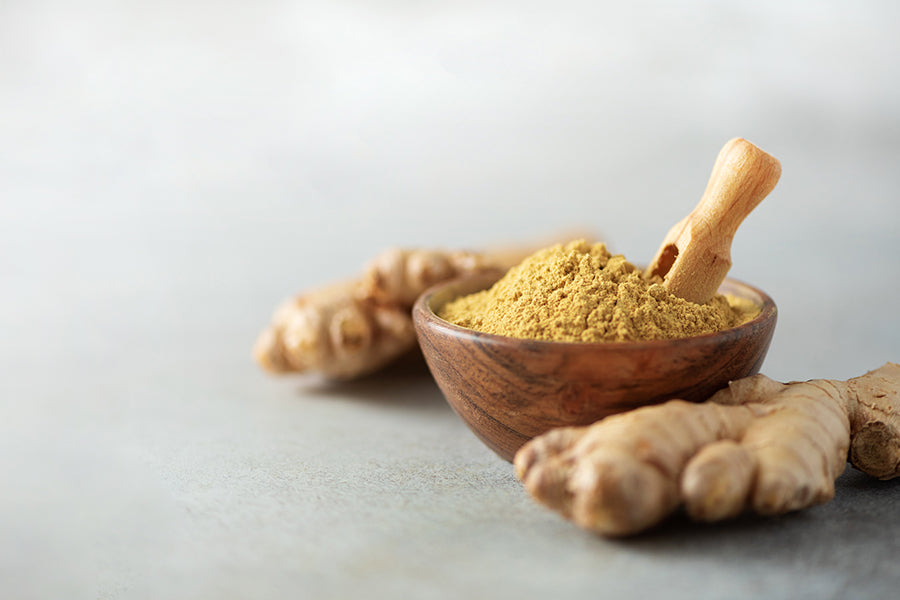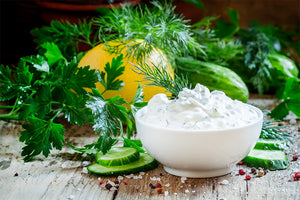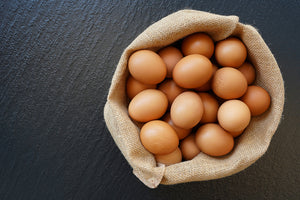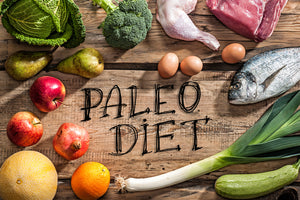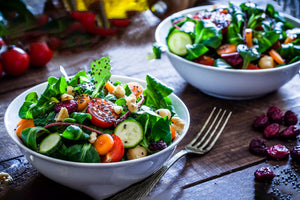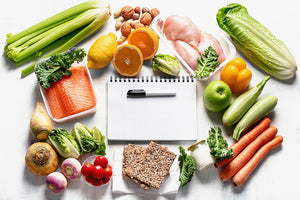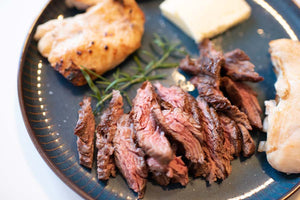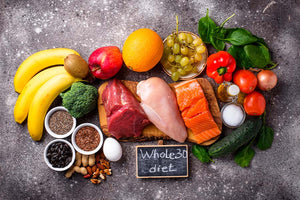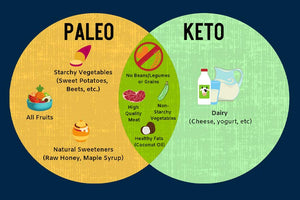Have you ever considered following an Ayurvedic diet plan? If not, it's time to be inspired by all the benefits this type of eating can offer. From weight loss to improved digestion, there are plenty of reasons to try it. However, like any other diet, there are also downsides to consider before making a decision.
In this post, we'll explore what Ayurveda is all about and examine the pros and cons of following an Ayurvedic diet plan.
What is an Ayurvedic Diet Plan?
Ayurveda is an ancient system of medicine coming from India, based on the belief that the mind, body, and spirit are interconnected. Ayurvedic practitioners believe that imbalances in the mind-body-spirit system can lead to disease. Ayurveda is a way of life covering almost every aspect of it. One important aspect of Ayurveda is diet.
The Ayurvedic approach to diet and nutrition revolves around the idea that everyone has a unique constitution, a combination of the three doshas – Kapha, Pitta, and Vata. This constitutional type is said to influence all aspects of health, including how we digest and metabolize food.
An Ayurvedic diet plan aims to provide the right balance of nutrients for each individual keeping in mind the specific constitution (dosha) to promote health and well-being.
The first step is to identify your dominant dosha type and tailor your diet accordingly. For example, if you are mostly Kapha, you will need to eat light, simple foods that are easy to digest.
If you are predominantly Pitta, you will need to focus on cooling, grounding foods that counterbalance any excess heat in the body. And if you are Vata, you will need to eat plenty of warming, nourishing foods that help to counterbalance any excess cold or wind in the body.
Your diet plan will be based on what works for your dosha in an Ayurvedic diet. So the basic thing is to determine your dosha and find a detailed explanation of the dosha itself. Once you know what works for a particular dosha, you can plan your diet. No need to even ask a professional.
An Ayurvedic diet plan tailored to your constitution can help promote balance and harmony in your body and mind, preparing you for a fulfilling daily life experience!
It's important to note that all doshas are present in each individual; a specific dosha constitution shows a person's dominant dosha (qualities).
Different Doshas in Ayurvedic Diet Plan
Like I told you in the previous section, if you're interested in following an Ayurvedic diet, it's important first to understand the three main types of bodies or doshas.
In this section, you'll be educated about the three different doshas to find the one you identify with. Along with the dosha explanation, you can also read about the food choices that work for these doshas.
Pitta Dosha
Pitta dosha is related to fire and water elements and is considered the "hot" type. People with this dosha tend to be strong and irritable. An Ayurvedic diet is a holistic approach to health that considers an individual's unique constitution.
One of the three main Ayurvedic body types, or doshas, is Pitta. People with a Pitta constitution tend to be of average build, with good digestion and metabolism. They are intelligent and ambitious but can also be quick-tempered and irritable.
Ayurveda recommends that people with Pitta dosha should eat cooling foods that are easy to digest. Suitable Pitta-pacifying foods include sweet fruits, leafy greens, and dairy products. Spicy, sour, and fried foods should be avoided, as they aggravate Pitta imbalances.
By following a Pitta-specific diet plan, one can create the right balance of forces and chemicals in the body and enjoy good health.
Kapha Dosha
Kapha dosha is about the earth and water elements and is considered the "cool" type. People with this dosha tend to be calm and lazy.
People with a predominance of Kapha energy tend to be stable, grounded, and patient. They are often naturally more overweight and have a larger frame than those with other dosha types.
Kapha types also have smooth, clear skin and thick, lustrous hair. Because of their earthy nature, Kapha types are often very down-to-earth, and they can be good at manifesting their goals into physical form.
If you think you have a lot of Kapha energy, here are some simple lifestyle changes you want to make to help bring your system back into balance. These include eating lighter, more easily digestible foods, regular exercise, and spending time in nature.
In general, Ayurveda recommends eating a balanced diet that includes all six tastes: sweet, sour, salty, spicy, bitter, and astringent.
However, Ayurveda suggests avoiding heavy or sweet foods for people with a Kapha dosha. Common foods for a Kapha type include leafy greens, sprouts, and Soups made with light vegetables like zucchini and squash.
Related Article: Diets Vs. Lifestyle Change for Weight Loss
Here's a list of foods that work best for Kapha:
- Apples
- Pears
- Berries
- Grapes
- Melons
- Leafy greens
- Cruciferous vegetables
- Tomatoes
- Cucumbers
- Citrus fruits
- Garlic
- Ginger
- Turmeric
- Black pepper
- Cayenne pepper
- Lemon
- Lime
TRENDING ARTICLES
Vata Dosha
Vata dosha is associated with air and space elements and is considered the "cold" type. People with this dosha tend to be anxious and have trouble sleeping.
Vata dosha is one of the three main Ayurvedic doshas or energy types. People with a predominance of Vata are creative, energetic, and quick-thinking. They may also be prone to anxiety, worry, and feelings of insecurity. People with a Vata constitution should focus on grounding activities and routines to stay balanced.
Eating warm, cooked foods; getting regular exercise; and spending time in nature can all help to keep Vata in check. Massage and oil therapies are also beneficial for soothing Vata energy.
Vata types may benefit from a more structured approach to life when out of balance. Establishing regular mealtimes, sleep patterns, and exercise routines can calm and stabilize an otherwise chaotic world.
You'll want to focus on grounding, calming foods with Vata dosha. Start by avoiding anything too dry, light, or cold - so skip the salad and go for a heartier soup or stew instead. Grounding grains like rice and quinoa are also great Vata-balancing options, as are warming spices like ginger, turmeric, and black pepper.
Regarding fruits and veggies, stick to cooked or roasted options rather than raw - think roasted root vegetables or a hearty winter squash soup. And finally, be sure to include plenty of healthy fats in your diet to help keep Vata dosha balanced. Good choices include avocados, coconut oil, nuts, and Seeds.
Key Concepts of an Ayurvedic Diet
To educate ourselves on the exact science behind the Ayurvedic diet, learning the key concepts is the best place to start. We'll learn about the key Ayurvedic concepts regarding food so we know how things generally work in an Ayurvedic diet plan.
Let's dig in then, shall we?
Digestion (Agni)
Digestion is the key concept in the Ayurvedic diet, and according to this theory, digestion and its problems are the root causes of many problems in the body.
Ayurveda teaches us that poor digestion is the leading cause of poor health. Just as a strong fire transforms logs into ashes, our digestive fire should turn our food into easily-absorbed nutrients and waste. Ayurvedic practitioners call this digestive power 'Agni.'
When we consume incorrect foods, either in quantity or combination, we damage our Agni. Poor digestive function leads to even worse digestion quality, including undigested food, which creates toxins (ama). These circulate through our channels and result in disease and illness.
Specific Impacts of Food on the Body
Unlike most diets, where food is just plain calories and nothing else, the Ayurvedic diet believes different foods affect our bodies differently. Some are heavy, some light; some heating, others cooling; and so on.
Let's say you have an abundance of Pitta (fire), in which case you need to consume cooling foods. But if what you have is Kapha (cool and moist) in excess, then you will require warming dishes instead."
So, Ayurvedic is more than just calorie counting and creating a deficit in weight loss. Many factors weigh in and affect our course of action.
Balancing Effects of Food
Depending on their body type, each person needs a different diet. According to Ayurvedic diet guidelines, for example, if someone has a strong Vata constitution or is experiencing Vata imbalances, they may balance the effects of dryness in their body by eating moist foods.
However, if somebody is mostly Kapha, they may reduce the heaviness of Kapha with light and easy-to-digest foods that are drier. The best time to eat and optimal digestion are also influenced by being in harmony with the time of day and season.
Eat Fresh, Avoid Canned Food
It's best to eat food that is as fresh as possible. Try cooking enough for the day or, at most, what you'll need the next day. Older food doesn't have much (if any) life force left in it (prana).
Whenever possible, avoid canned, preserved, frozen, or microwaved foods. Always go for fresher options when they're available to you.
Related Article: Vegan Diet for Weight Loss: Does It Really Work?
Mindful Eating
Be attentive to how your body feels and the intensity of your hunger. Mindless eating or eating just for the sake of eating is not an Ayurvedic way of eating. You eat when hungry and eat enough light foods so you're only just satiated. Do not overeat. Always have some appetite left after filling your tank.
If you're eating heavy stuff, eat even less, just enough to placate only half your appetite. This is because heavy foods are difficult to digest and are more likely to create problems in your body.
If you aren't feeling well, stick to consuming light foods exclusively. You should let your body focus on getting well instead of digesting heavy foods.
Heavy and Lights Foods According to Ayurvedic Diet
Wheat, seeds, nuts, oats, salt, brown rice, onions, cucumber, most fruits, beef, beans, fish, lamb, pork, and eggs.
Light Foods:
Buckwheat, rye, corn, lettuce, tomato, potato, apple, lentils, chicken, rabbit, and cow's milk.
Unhealthy Food Combinations
In addition to carefully planning meals according to the different qualities of foods and their specific impacts on the body according to the body type, Ayurvedic diet ideology is very particular about food combinations because, again, wrong food combinations can slow down food digestion, leading to a whole host of problems and illnesses in the body.
Here are the food combinations, unwanted according to the Ayurvedic diet:
- Avoid mixing milk and fruit or even milk and yogurt.
- Avoid consuming milk when eating fish, radishes, cherries, tomatoes, bananas, potatoes, melons, meat, citrus fruits, eggs, and bread.
- Ayurveda does not believe in mixing any type of melon with other foods.
- Prevent fresh fruit consumption during meals (cooked fruits can be eaten with cooked meals)
- Refrain from having dairy and animal protein, such as milk and eggs, meat and cheese, and fish cream.
- Don't combine heavy and light foods in a single course. For example, don't eat cheese and crackers together.
Qualities of Food in the Ayurvedic Diet
According to Ayurveda, foods and substances affect the body and mind differently.
Here's a quick overview of the food qualities:
Satva
Satva foods which include spices, freshly cooked foods, fruits and vegetables, nuts, dried fruits, and seeds, promote clarity of thought, harmony, and balance in our body according to those who practice this type of eating.
Tamas
Tamas foods cause lethargy, heaviness, and inertia. These foods include microwave meals, tea, coffee, alcohol, drugs, chicken, beef, fish, pork, eggs, mushrooms, fried food, and frozen food.
Rajas
These foods energize you and heighten your senses, for example, onion, garlic, salty food, ready-to-eat canned food, paneer, ice cream, yeast sour cream, basmati rice pickles, vinegar, and sugar.
Food Plans for the Three Doshas
Find food plans according to your doshas in this section. If you haven't figured out your dosha yet, refer above.
Plan for Vata Dosha
These guidelines help Vata mind-body constitutions maintain and restore their dosha balance, regardless of the basic constitution.
Best Vegetables
Asparagus, carrots, cucumber, beets, garlic, green beans, onions, radishes, sweet potatoes, and turnips.
Vegetables in moderation
Broccoli, Brussels sprouts, cauliflower, cabbage, mushrooms, celery, eggplant, leafy green vegetables, peas, peppers, potatoes, tomatoes, and zucchini
Try to avoid raw vegetables, in general.
Best fruits
- Bananas
- Apricots
- berries,
- cherries,
- coconut,
- Avocadoes
- fresh figs,
- grapefruit,
- lemons,
- grapes,
- mangoes,
- sweet melons,
- sour oranges,
- Papaya
- Pineapple
- Peaches
- Plums
- stewed fruits.
Fruits in Moderation
Cranberries, pomegranates. and peers
Do not consume dried fruits as well as fruits that are not ripe.
Grains of Choice
Cooked oats and cooked rice.
Grains in Moderation
Wheat, barley, buckwheat, corn, dry oat, millet.
Dairy
Everything in dairy is allowed.
Preferred Meat
Chicken, turkey, and seafood, in moderation.
Meat to be Mindful of:
Eat Red meat in limited quantities.
Beans of Choice
Chickpeas, lentils, mung beans, Tofu
Beans in Moderation
Kidney beans and black beans.
Accepted Oils
Sesame oil, olive oil, and Ghee.
Sweeteners
Sweeteners are allowed.
Nuts and Seeds
The best nuts are almonds.
Spices and Herbs
When cooking, be sparing with spices. Excessively bitter or astringent herbs and spices, like coriander seed, fenugreek, parsley, and thyme, should be used minimally or avoided altogether. Saffron and turmeric can still be used but in moderation.
Food Plan for Pitta Dosha
Allowed Vegetables:
Sweet and bitter vegetables include asparagus, broccoli, Brussels sprouts, cabbage, radishes, celery, cauliflower, green beans, cucumber, green (sweet) peppers, mushroom, leafy greens lettuce, okra parsley peas, potatoes, sprouts, squash, potatoes, sweet, zucchini, carrot spinach.
Vegetables in Moderation:
Eggplant, tomatoes, onion, chilies, hot peppers, and beets.
Best Fruits
Bananas, cherries, avocados, coconuts, mangoes, figs, melons, plums, oranges, pineapples, pears, raisins, and prunes.
Fruits to be Mindful of
Apricots, berries, apples, sour cherries, raw papaya, grapefruit, dark grapes, peaches, persimmon, and pineapples.
Use Ripe fruits only.
Grains of Choice
Wheat, barley, oats, and basmati rice.
Grains in Moderation
Corn, brown rice, corn, millet, and rye.
Dairy
Butter, Ghee, egg whites, milk, and fruit sorbets in water.
Dairy (moderation)
Cheese, sour buttermilk, sour yogurt, egg yolk, ice cream, sour cream.
Best Meat:
Chicken, turkey, shrimp, and river fish (all in small amounts).
Meats (moderation)
Red meat and seafood in general.
Beans of Choice:
Chickpeas, red lentils, mung beans, Tofu, and other soybean products (not fermented).
Black gram, black lentils, and Ar har Dal (moderation)
Best Oils:
Olive, soy, sunflower, and grapeseed oil.
Oils to be Mindful of
Almond, corn, safflower, sesame, and coconut oil.
Nuts and Seeds of Choice
Coconut, pumpkin seeds, sunflower seeds, flaxseeds.
Best Sweeteners
Everything except honey and molasses.
Greens and Spices
Spices are considered too hot. The following are OK for Pittas in small amounts: Cardamom, cilantro (green coriander), cinnamon, coriander seed, dill, fennel, mint, saffron, turmeric, cumin, and black pepper.
Food Plan for Kapha Dosha
Best Vegetables
Asparagus, beets, broccoli, Brussels sprouts, cabbage, carrots, cauliflower, celery, eggplant, garlic, leafy green vegetables, lettuce, mushrooms, okra, onions, peas, peppers, potatoes, radishes, spinach, and sprouts.
Vegetables in Moderation
Cucumbers, sweet potatoes, tomatoes, and zucchini.
Best Fruits
Apples, apricots, berries, cherries, cranberries, papaya, pears, prunes, pomegranates, and grapefruit. Dried fruits generally are good for Kaphas, specifically apricots, figs, prunes, and raisins.
Fruits in Moderation
Dates, fresh figs, bananas, coconuts, and mangoes.
Best Grains
Barley, buckwheat, corn, millet, oats, rye, and basmati rice.
Grains in Moderation
Rice and wheat.
Avoid hot cereals and steamed grains because they are too moist and heavy for Kaphas.
Best Dairy
Warm skim milk, small amounts of whole milk, eggs (not fried or cooked with butter), goat's milk, soy milk, and camel milk.
Dairy in Moderation
Egg yolks
Best Meats
Chicken, turkey (all in small amounts), and lean fish.
Meats in Moderation
Shrimp and red meat.
Best Beans
All legumes are acceptable.
Beans in Moderation
Kidney beans and Tofu.
Best Oils
Almond, sunflower, olive oil, and grapeseed oil (all in small quantities).
Sweeteners
All in very small quantities.
Best nuts and Seeds
Sunflower seeds, pumpkin seeds, and flax seeds.
Herbs and Spices
All are good, especially cumin, fenugreek, sesame, and ginger, which are especially good for improving digestion.
Benefits of an Ayurvedic Diet
An Ayurvedic diet is a holistic approach to eating based on the ancient Indian system of medicine known as Ayurveda.
The diet focuses on achieving balance in the body through consuming whole, unprocessed foods that are nourishing and easy to digest.
Ayurveda emphasizes the importance of eating in harmony with the body's natural rhythms, which is reflected in the Ayurvedic diet.
The diet supports the body's natural detoxification process and promotes overall health and well-being.
The Ayurvedic diet has three main principles: eating fresh, seasonal foods, avoiding processed and artificial foods and choosing foods suitable for your individual constitution. The Ayurvedic diet can help improve energy levels, reduce stress, and promote healthy digestion.
Downsides
While an ayurvedic diet can have many benefits, there are also some potential disadvantages. One of the most common concerns is that an ayurvedic diet can be difficult to follow, especially if you're used to eating a more Western diet.
This is because an ayurvedic diet often avoids certain foods, such as dairy and gluten, that are staples in the Western diet.
In addition, an ayurvedic diet can also be expensive, as it often requires buying specialty ingredients that may not be readily available in your local grocery store.
Finally, an ayurvedic diet may not be suitable for everyone; for example, if you have a medical condition that requires you to avoid certain foods, you should speak with your doctor before starting an ayurvedic diet.
FAQs
1. Is Ayurveda a vegetarian diet?
Ayurveda is an Indian treatment that typically advocates for a vegetarian diet. While Ayurveda does not outright forbid non-vegetarianism, it certainly prefers vegetarianism.
2. What are the 3 types of Ayurveda?
The three fundamental regulatory principles of the body, mind, and behavior in Ayurveda, called doshas, are Vata, Pitta, and Kapha.
3. Is coffee allowed in the Ayurvedic diet?
According to Ayurveda, it's best not to have more than one cup of coffee daily—even if you're a Kapha. If you need help reducing your coffee intake, Kathryn suggests drinking half as much and starting with a cup of warm water instead. This will hydrate your system before java hits it.
Plus, always drink coffee on a full stomach for added benefits! And go organic while you're at it!
4. Is breakfast necessary according to Ayurveda?
Caffeinated beverages are not part of Ayurveda. A light breakfast is crucial to stimulate digestion and offer the energy needed to get through the activity for the day.
Summary
Now that you know the basics of Ayurveda, it's time to put this ancient system into action. Luckily, there are several ways to do so. You can find your dosha type and follow one of the three diet plans mentioned above. Alternatively, you could visit an ayurvedic doctor or practitioner for guidance on changing your diet and lifestyle according to your dosha type.
No matter what route you choose, following an ayurvedic diet is sure to improve your overall health and well-being.


